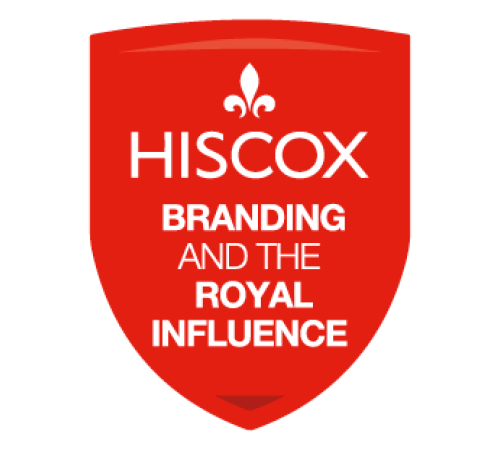

Learn how to use Facebook for your business.
How to set up a Facebook page for your business: A step-by-step guide
Facebook is the most popular social platform for people between the ages of 35-44 [2]. This shows it’s the prime place to engage with older millennials. Meanwhile, over 2.8 billion people [2] log into at least one Meta family app every day.
But how to get started…
Getting the basics of your page right is crucial. Consider the settings carefully. But remember, you’ll need a personal Facebook profile to create your company page.
Step 1: Create your name
The first, and most important, step is to name your Facebook page. Consider sticking to your brand name or at least something recognisable by customers searching for you. This is the name they’ll use in search engines and in the Facebook search bar – so you need to make sure you can be found quickly.
Step 2: Choose your category
When selecting a category, you should ensure it’s appropriate for your business. If you are a local company, you can choose the ‘local’ category to allow customers to ‘check in’ geographically. However, if you don’t have walk-in traffic, then ‘company’, ‘organisation’, or ‘institution’ may be more suitable.
Step 3: Fill in the ‘About’ section
The ‘About’ section is an important part of your Facebook page. This is where you fill in all your key information, such as your location, what you do, and your history. You should try to describe your business in an active and interesting way, using relevant keywords associated with your target market. Don’t forget to include your website URL and contact details to encourage visits and enquiries.
Step 4: Add the finishing touches
One of the last steps is adding a profile photo and cover photo to your page. Your profile picture will be the first thing any visitors see, so you may want to make sure it’s something recognisable – such as your business logo.
You can be a little more creative with your cover photo. For this, you may want to use:
- An attractive image of your products
- A picture of your physical storefront
- An infographic that includes your contact details or awards you’ve won.
Visitors to your page can also choose to see specific things like your photos, videos, events, or likes – simply by selecting a tab on your sidebar. Make sure you add relevant tabs or manage your existing ones. For example, if you promote regular events, you could move that tab up to the top of the list. You can even add a shop section to sell via Facebook, which can help to boost your conversions.
Step 5: Start posting and share your page
Before sharing your new page, you need to get some content on there. Whether it’s a few promotional posts, an introduction to your business, or perhaps just catching up with your activity over the last month or so, visitors need something to engage with.
Once you’ve posted some content, invite your friends to like your page. Asking close friends and family to like the page first will give it some initial credibility. From there, you can start promoting it on other platforms, add social links on your website, and even include it in your branding.
What should I post on my Facebook business page?
When you start out on Facebook, you shouldn’t expect massive engagement from the get-go. There are a few ways to use Facebook for marketing your small business, but the key thing to consider is what content will be most interesting and useful to your audience. It’s the perfect time to experiment and learn.
Facebook is an excellent place to gauge reactions to content and get opinions and viewpoints, all while communicating your brand values in a natural way. It can also help to attract customers who might never have found you otherwise, through the power of recommendations (posts liked or shared by people in their network).
Organic reach is typically low, however, so don’t fret over the number of ‘likes’ your post receives.
However, it is important to post regularly to keep up consumer engagement. Luckily, you’re not alone in this, as Facebook has a handy content scheduling tool to keep you on track.
Here are a few examples of good Facebook content to get you started:
Visual content
If you have uploaded a video to YouTube, upload it separately to Facebook rather than just sharing the YouTube link. The Facebook algorithm will prioritise native content much higher than a shared video from another platform like YouTube, according to this blog by Brandwatch (external link) [3].
Learn more about YouTube marketing for small business
Product releases and events
If something exciting is going on, your audience needs to know about it. From new product and service releases to events, these are all post-worthy occasions. For example, you may want to think about creating posts for:
- Store openings – your customers need to know where to find you, of course
- Award wins – or even if you’ve recently been to a ceremony or important corporate event
- New products – you should ideally announce these days or weeks before they’re released and again when they’re ready to buy
- Anniversaries – business and product anniversaries are a great excuse to showcase your innovations and heritage as well as being a good time to offer discounts and launch competitions.
Competitions
Competitions can be created for various reasons – or no reason at all! These customer-focused events show how you value your audience. While you are giving back to your customers, competitions can also benefit your brand visibility. For example, if you hold a giveaway, the terms for this might include people sharing your post to their feeds, liking your content, and following your page.
Behind-the-scenes posts
When sharing content, keep it full of personality. You need to create communications that can attract attention within a very competitive feed. Behind-the-scenes content is a popular way to up audience engagement. It emphasises the two-way communication that social platforms enable between company and customer for a more open, less corporate feel.
Types of behind-the-scenes content could include:
- New stock arrival announcements – keeping followers up-to-date with popular products and services
- Product process posts – short clips that appear to give exclusive access as to how your products are made
- ‘Coming soon’ updates – clips or photos that hype up future products help to keep audiences engaged.
How to use Facebook ads and boosted posts
As a business user, you can use Facebook to create paid-for ad campaigns and boosted posts that specifically target certain demographics. For example, if organic engagement with your content is low, a targeted ad campaign can promote your brand on feeds that were previously inaccessible.
Essentially, you create a marketing campaign and pay Facebook to promote it across the platform, to people whom its algorithm believes are the best fit for your business.
Meanwhile, boosted posts do as the name suggests – you pay for an existing post to be boosted onto other peoples’ feeds, rather than creating new content. This option is useful if you’ve created a specific time-sensitive announcement – e.g. for an event or product release, rather than generalised advertising for your brand.
Facebook has all the onsite tools you need to be able to:
- track the activity of your posts and ads
- analyse the post engagement
- budget for further campaigns.
Most of all, it’s important to experiment with different campaign types to see how your content is best received and engaged with.
How to engage your Facebook audience
Facebook has a huge base of more than 2.27 billion monthly users worldwide [4], which means your business will be fighting for that precious engagement within a huge net of competitors.
Posting content on Facebook is, of course, only half the story.
Follow up your efforts with the right tools and actions to ensure as wide an audience as possible are finding and engaging with it.
For the best results, make sure every post remains relevant to your business and invites interaction. With organic content only reaching approximately 6% [5] of your consumer base, paid-for campaigns, such as targeted ads and boosted posts, are the way forward for most brands.
Facebook ‘Groups’ can be effective too. They give you the opportunity to offer useful advice and tips and build credibility and trust among a community. This can help to attract more engagement compared to a post, for example. You may even want to start your very own group, but only do this if you have the time to manage it well.
When communicating directly to customers, it’s important to be prompt when replying. This keeps people engaged and sends the message (literally) that the voice behind your business is responsive and thoughtful.
How to measure your Facebook marketing
There are some excellent tools to help you set KPIs and measure the success of Facebook activity. These include:
- The Google URL builder – this allows you to create custom URLs and review Analytics on a regular basis to see what traffic is being generated [6].
- Facebook Insights [7] – provides you with useful data that you can compare against different post and ad engagement rates.
Every small business should probably be on Facebook. By committing enough time to maintain your business online and creating and sharing quality content that communicates your values, you open yourself up to a whole new market. With a range of helpful tools now available on the platform itself, using Facebook marketing for your small business has never been easier.
Want to do more to up your digital game? Get the lowdown on SEO tips for small businesses and learn how to make Instagram work for your business.
References
- https://wearesocial.com/uk/blog/2022/01/digital-2022-another-year-of-bumper-growth-2/ (external link)
- https://blog.hootsuite.com/facebook-demographics/ (external link)
- https://www.brandwatch.com/blog/facebook-video-ads-best-practices/ (external link)
- https://zephoria.com/top-15-valuable-facebook-statistics/ (external link)
- https://blog.hootsuite.com/organic-reach-declining/ (external link)
- https://www.monsterinsights.com/how-to-easily-track-your-facebook-users-in-google-analytics/ (external link)
- https://blog.hootsuite.com/facebook-analytics-insights-beginners-guide/ (external link)
Disclaimer:
At Hiscox, we want to help your small business thrive. Our blog has many articles you may find relevant and useful as your business grows. But these articles aren’t professional advice. So, to find out more on a subject we cover here, please seek professional assistance.






